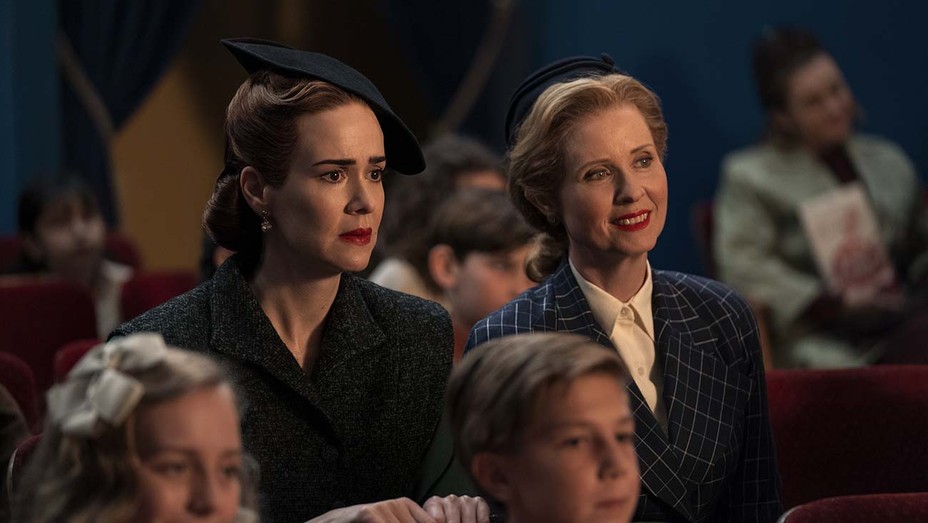Of all the filmmakers considered to be the spiritual successors of Alfred Hitchcock, Ryan Murphy probably has the most diverse résumé. From teen musicals (‘Glee’) to procedurals (‘9-1-1’) to anthology horrors and true crimes (‘American Horror Story’ and ‘American Crime Story’), you name it; he has made it. His latest offering, Netflix’s psychological drama series ‘Ratched,’ is an extensive exploration of macabre and disturbing behavior. Starring Sarah Paulson, Finn Wittrock, Cynthia Nixon, Jon Jon Briones, Charlie Carver, Judy Davis, and Sharon Stone, it is predominantly set in 1940s California and revolves around a woman’s efforts to save her mass-murdering brother from execution. If the historical aspects of the show or the shock-inducing murders and mayhem have made you wonder whether ‘Ratched’ is based on real-life incidents, this article is for you.
Paulson plays Nurse Mildred Ratched, who arrives to work at a mental hospital in California. In the next few weeks, she quickly manipulates her way to an authoritative position in the institution, which is brimming with barely-contained apprehension about the arrival of Edmund Tolleson (Wittrock), the killer of four Catholic priests. As the show progresses, it becomes more shocking and bizarre as a secret connection between Ratched and Tolleson is revealed. The series takes its time to develop a relationship between Ratched and Cynthia Nixon’s character, Gwendolyn Briggs, which is perhaps the most prominent realistic aspect of the show.
Ratched: A Villain’s Origin
No, ‘Ratched’ is not based on a true story. Instead, it gives the backstory of one of the most well-known villains in cinematic history, Mildred Ratched, the ruthless tyrant of a head nurse from the psychiatric facility in Oregon in the 1975 highly-acclaimed film ‘One Flew Over the Cuckoo’s Nest’, which, in turn, is based on the namesake book by Ken Kesey. The book was originally published in 1962.
Actor Kirk Douglas acquired the film rights to it not long after. He had previously appeared as R.P. McMurphy in the 1963-64 Broadway rendition of Kesey’s novel. However, despite investing a decade into the project, he was unsuccessful in getting the film made. That is when his son, Michael, agreed to buy the rights to the film. He got Lawrence Hauben and Bo Goldman to write the script and Czech-American filmmaker Miloš Forman to helm the project. It stars Jack Nicholson as the free-spirited and independent-minded R.P. McMurphy and Louise Fletcher as Ratched. Both Nicholson and Fletcher won Oscars for best actor and actress, respectively. The film also won the Best Features award, Best Director award for Forman, and Best Screenplay award for Hauben and Goldman.
Although the show is not based on any particular real-life event, it draws heavily on the contemporary world. It is set in the post-war 1940s. Empowered by a resounding victory in the war and a booming economy, America was rebuilding itself. Mixing this real-life context with a distinctive Hitchcockian flavor, Murphy transforms a well-lit and vibrantly-colored mental institution into a nucleus of unspeakable horror. However, as the series enunciates time and again, the apathetic barbarity demonstrated in it is more due to the limitation of science and the lack of understanding of human psychology than intentional cruelty.
Science was at a transitional period in the 1940s and 1950s, and we had only started to scratch the surface of what would become the fields of psychology and psychiatry. In those moments of trial and error, thousands of lives were destroyed because of misdiagnosis or false understanding of certain human behaviors. The showrunners of ‘Ratched’ masterfully illustrate this by focusing a subplot on a woman who has been institutionalized because she likes other women. Her story not only helps the central characters to finally realize that they have genuine feelings for each other but also makes us appreciate how far we have come as a society.
Read More: Is HBO’s The Third Day a True Story?

